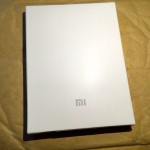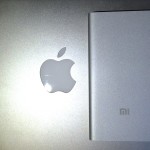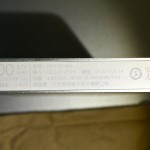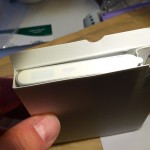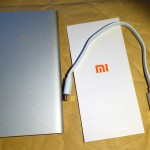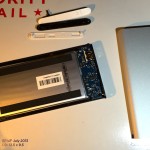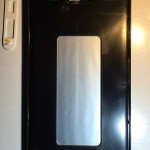Finally received a new Apple USB Power Bank I ordered 3 weeks ago.
Did I say Apple? I mean, Millet, no, sorry, Xiaomi. Sorry for the confusion, but in my defense, Xiaomi is borrowing so much of Apple’s design language, from the satin white packaging, to the specific grey of the logo and the “swiss” typeface, not to mention the particular tone and finish on the aluminum case.
I got the 5,000 mAh hour version from Banggood for $15.99, shipped. It took a three weeks to get here, but arrived in good condition. The footprint is about the size of my iPhone 6’s, but the powerbank is almost twice as thick.
It doesn’t quite achieve the fit-and-finish of an Apple product, but it definitely feels well made. That general level of quality is more than skin deep too.
The plastic trim pieces at either end of the case are secured with a few locking tabs and double-sided tape. It takes some delicacy but prying off the plastic trim on the bottom end reveals two phillips head screws. Removing them allows another plastic plate to be removed, which allows the core, holding the battery and the circuit board to slide out easily.
The PCB is populated with surface mount components, including a very nice, highly integrated BQ24195 IC from Texas Instruments that is well suited for power bank use. This chip does double-duty, providing both a buck-converter based lithium ion charger and a highly efficient boost-converter to provide the 5V necessary for USB devices from the battery. Both functions share the same shielded inductor, and operate at 1.5MHz, providing >90% efficiency during both charging and discharging. This efficiency makes the most of the power in the battery, but in doing so, it also reduces heat generation, allowing the pack to be charged at up to 2A. Discharge current is up to 2.1A. My brief testing bears out these numbers.
The power bank also has a thermistor, allowing the power IC to monitor the temperature of the cell during charge and reduce the charging current to prevent overheating. I’d guess it also uses the ICs ability to limit charging current draw based on USB coding from the input source.
This chip can be microprocessor controlled, and the microprocessor can set the charging voltage and current. I’m sure this comes in handy for Xiaomi, allowing them to swap in cells with different charge termination voltages without having to change components. Xiaomi also uses similar chips in their larger power banks.
I’m thinking of looking into getting ICs made up into small modules that can be incorporated into DIY projects. They support input voltages up to 17v, charging currents up to 4.5A. The boost-converter output current is apparently limited to 2.1A, but that’s still pretty good, and the IC can provide discharge protection at battery voltage at up to 6A sustained.
The pouch cell in my example comes from Lishen, but other teardowns have cells from ATL, which reviewers have conspicuously noted, also supplies cells to Apple.
I haven’t put this through a full cycle of use or tests, but based on the reports of others, I expect this to be a capable USB power bank.
